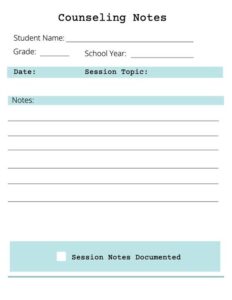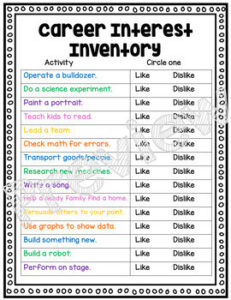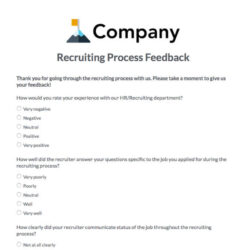Understanding what truly motivates and interests students when it comes to potential job opportunities can feel like trying to solve a complex puzzle. Whether you are a career counselor aiming to guide future professionals, an educational institution looking to align programs with student aspirations, or an employer seeking to connect with emerging talent, getting clear insights is crucial. Without a structured approach, it is easy to miss vital information that could shape a student’s career path or an organization’s recruitment strategy.
This is where a well-designed survey becomes an invaluable tool. It allows you to systematically gather information directly from the source, providing a clear picture of what students envision for their working lives. By utilizing a thoughtful questionnaire, you can uncover preferences regarding job types, work environments, skill development, and even desired compensation, all of which contribute to a more effective matching process for both students and potential employers.
Why a Student Job Interest Survey Template is Indispensable
Implementing a dedicated survey for student job interests offers a multitude of benefits across various sectors. For educational institutions, it helps in refining curriculum, developing relevant vocational training programs, and strengthening career services by knowing exactly what kind of opportunities students are seeking. This proactive approach ensures that the education provided directly aligns with future employment trends and student aspirations, leading to higher rates of student success and satisfaction post-graduation.
Employers, on the other hand, can leverage these insights to fine-tune their recruitment strategies, create more appealing internship programs, and design entry-level positions that resonate with the values and expectations of younger generations. Imagine being able to tailor your outreach efforts based on concrete data about what students prioritize in a job – whether it is flexibility, opportunities for growth, or a strong company culture. This direct feedback can significantly improve hiring efficiency and reduce turnover rates.
Furthermore, for students themselves, participating in such a survey can be a reflective exercise, prompting them to think deeply about their career goals and preferences. It is an opportunity for self-discovery, helping them articulate what truly matters to them in a professional setting. This clarity empowers them to make more informed decisions about their academic paths and initial career choices, setting them up for long-term fulfillment.
Key Areas to Cover in Your Survey
When developing a student job interest survey template, consider including questions that cover a broad spectrum of information to get the most comprehensive insights. This multi-faceted approach ensures you capture both explicit preferences and underlying motivations.
-
Preferred Industries and Job Types: What fields are students most interested in (e.g., tech, healthcare, arts, finance)? Are they looking for full-time, part-time, or internship opportunities?
-
Desired Work Environment: Do they prefer a fast-paced, collaborative office, or a more independent, remote setup? What kind of company culture appeals to them?
-
Skills and Development: What skills do they hope to utilize or develop in a job? Are they interested in mentorship, training programs, or opportunities for continuous learning?
-
Values and Priorities: What is most important to them in a job – salary, work-life balance, social impact, career advancement, innovation, or a sense of purpose?
-
Geographic Preferences: Are they willing to relocate, or do they prefer opportunities within a specific region?
-
Compensation Expectations: While this can be sensitive, understanding general salary expectations can help calibrate offerings.
By encompassing these areas, your survey moves beyond simple data collection to a powerful tool for strategic planning and personalized guidance.
Crafting Your Perfect Student Job Interest Survey Template: Key Elements to Consider
Designing an effective survey involves more than just listing questions. It requires a thoughtful approach to ensure clarity, encourage participation, and yield actionable data. Start by defining your primary objective. What specific insights are you hoping to gain? This clarity will help you filter out unnecessary questions and focus on what truly matters for your goals, whether it is curriculum development or recruitment targeting.
Keep the language clear, concise, and approachable. Avoid jargon or overly academic terms that might confuse or deter students. Use a conversational tone to make the survey feel less like a chore and more like an engaging conversation. Structured question types, such as multiple-choice, rating scales, and open-ended questions, can offer a good balance, providing both quantifiable data and qualitative insights.
Consider the length of the survey. Students have limited time and attention spans, so a lengthy questionnaire might lead to incomplete responses or low participation rates. Aim for a manageable number of questions that can be completed within 10-15 minutes. Piloting the survey with a small group of students before a full launch can help identify any confusing questions or technical glitches, allowing for adjustments that improve the overall experience.
Finally, plan for how you will distribute and analyze the results. Online survey platforms are often the most efficient way to reach a large student population and automatically compile responses. Once the data is collected, dedicate time to thoroughly analyze the findings, looking for trends, outliers, and surprising insights. This analytical step is crucial for translating raw data into meaningful strategies, helping you make informed decisions that benefit students and stakeholders alike.
Understanding the career aspirations of students is a cornerstone for building effective educational programs and successful talent acquisition strategies. By systematically gathering insights into their preferences, skills, and values, organizations can tailor their offerings to genuinely meet the needs of the next generation of professionals.
Such a well-executed effort not only aids in making data-driven decisions but also fosters a stronger connection with students, ensuring they feel heard and valued as they embark on their career journeys. It is an investment in future talent and a commitment to aligning opportunities with genuine interest and potential.



